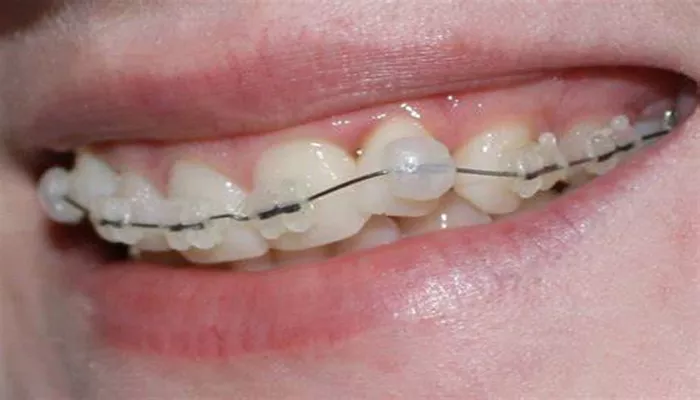Orthodontic wax is a specialized material designed to provide comfort for individuals undergoing orthodontic treatment, such as braces or aligners. Typically made from natural ingredients like beeswax, carnauba wax, or paraffin, this wax serves as a protective barrier between the sharp edges of dental appliances and the sensitive tissues of the mouth. It helps prevent irritation, sores, and discomfort that can arise during treatment.
Composition of Orthodontic Wax
Beeswax: A natural wax produced by honeybees, known for its pliability and non-toxic properties.
Carnauba Wax: A plant-based wax derived from the leaves of the carnauba palm, often used for its glossy finish.
Paraffin Wax: A petroleum-based wax that is commonly used due to its affordability and availability.
Orthodontic wax may also come in flavored varieties, such as mint, to enhance user experience.
When to Use Orthodontic Wax
Using orthodontic wax is particularly beneficial in the following scenarios:
Initial Adjustment Period: After getting braces or aligners, your mouth may need time to adjust. Wax can alleviate discomfort during this phase.
Irritation from Brackets or Wires: If a wire or bracket is rubbing against your cheeks or gums, applying wax can provide immediate relief.
Loose Brackets: In cases where a bracket becomes loose, wax can temporarily hold it in place until you see your orthodontist.
Post-Treatment Care: After braces are removed, if a retainer causes irritation, wax can help cover sharp edges.
see also: What Are The Types of Orthodontic Treatments?
How to Apply Orthodontic Wax
Applying orthodontic wax is a straightforward process that can significantly enhance comfort. Follow these detailed steps:
Step 1: Prepare Your Mouth and Hands
Wash Your Hands: Thoroughly wash your hands with soap and water to prevent introducing bacteria into your mouth.
Brush Your Teeth: Clean your teeth and braces to remove any food particles that might interfere with the wax’s adherence.
Step 2: Prepare the Wax
Take a Small Piece of Wax: Pinch off a piece of wax about the size of a pea. This amount is usually sufficient for one application.
Soften the Wax: Roll the piece of wax between your fingers for about 5 seconds. This warming process makes it more pliable and easier to mold.
Step 3: Application of Wax
Dry the Area: Use a clean towel to pat dry the area where you will apply the wax. A dry surface helps the wax stick better.
Apply the Wax:
Gently press the softened ball of wax onto the bracket or wire causing irritation.
Ensure that it covers the troublesome area completely to create a smooth barrier against your mouth’s soft tissues.
Step 4: Final Adjustments
Smooth Out the Edges: Use your fingers to mold and smooth down the wax so it adheres well and does not dislodge easily.
Check for Comfort: Make sure that there are no sharp edges exposed and that you feel relief from irritation.
Tips for Using Orthodontic Wax Effectively
Replace Regularly: Change out old or worn-out wax at least twice a day or whenever it falls off. This practice helps maintain oral hygiene by preventing bacteria buildup.
Leave It In Overnight: It is safe to keep orthodontic wax in while sleeping; this allows for prolonged relief from irritation.
Remove Before Eating or Drinking: Always take out the wax before meals to prevent food from getting stuck in it and to maintain good oral hygiene.
Do Not Reuse Wax: Once removed, do not put used wax back on your braces as it may contain bacteria.
Conclusion
Orthodontic wax serves as a vital tool in managing discomfort associated with braces and aligners. By providing a protective barrier against sharp edges, it enhances comfort during treatment. Following proper application techniques ensures maximum effectiveness while maintaining good oral hygiene practices.
In summary, utilizing orthodontic wax correctly can significantly improve your experience with braces or clear aligners. It’s an easy-to-use solution that provides immediate relief and allows you to focus on achieving that perfect smile without unnecessary discomfort. If you have any further questions about using orthodontic wax or need assistance with your orthodontic treatment, do not hesitate to reach out to your orthodontist for guidance and support.
Common Concerns And FAQs
Is Orthodontic Wax Safe?
Yes, orthodontic wax is non-toxic and safe to use in your mouth. If swallowed accidentally, it will pass through your digestive system without causing harm.
How Long Can I Leave Wax On?
You can leave orthodontic wax on throughout the day and overnight if needed. However, remember to remove it before eating or drinking.
Can I Use Orthodontic Wax with Clear Aligners?
Absolutely! Orthodontic wax can be applied to clear aligners if they cause irritation at any point during treatment.
What Should I Do If My Braces Hurt Persistently?
If you experience ongoing pain despite using orthodontic wax, consult your orthodontist for an evaluation. Persistent discomfort may indicate an issue that requires professional attention.
Related topics:

